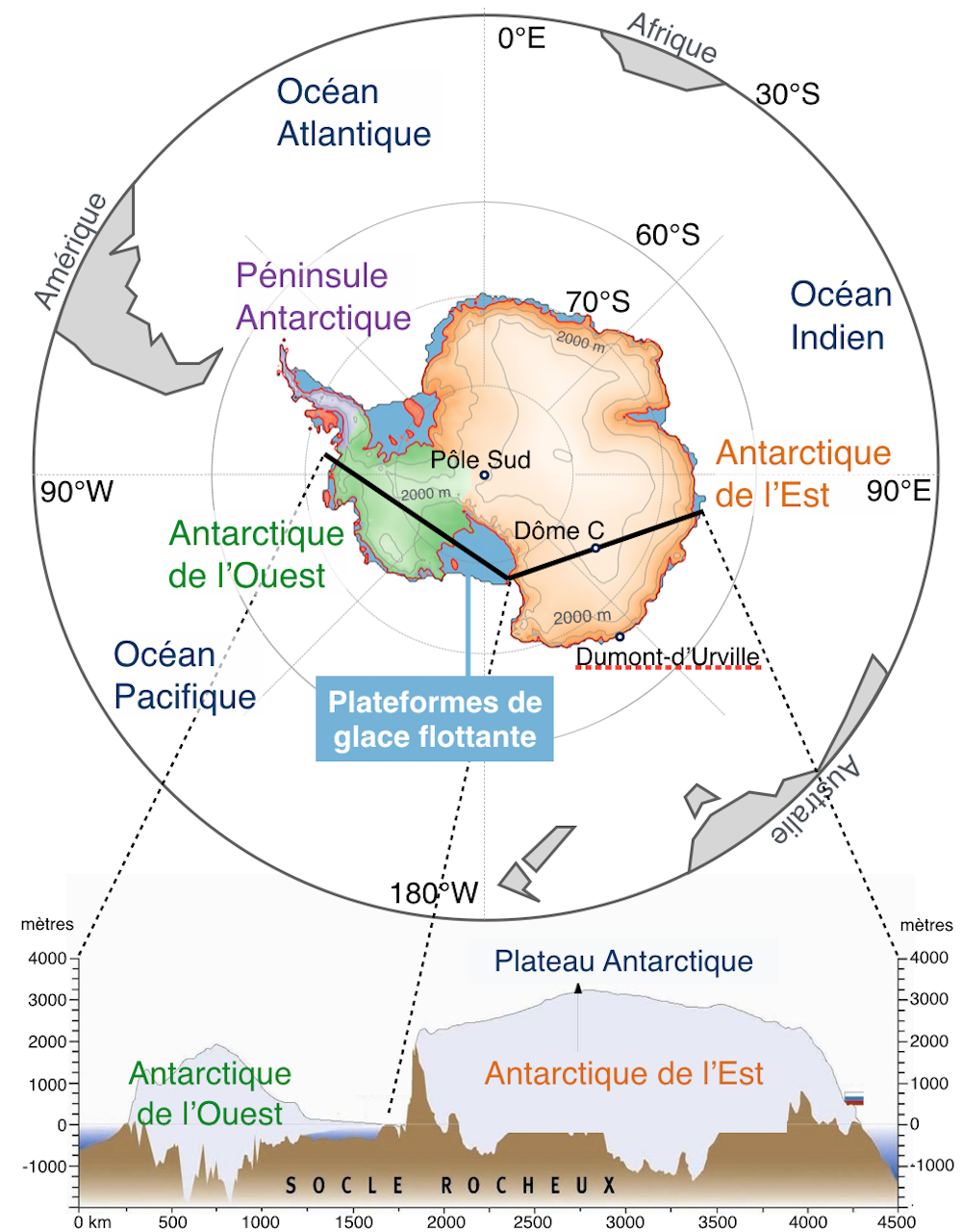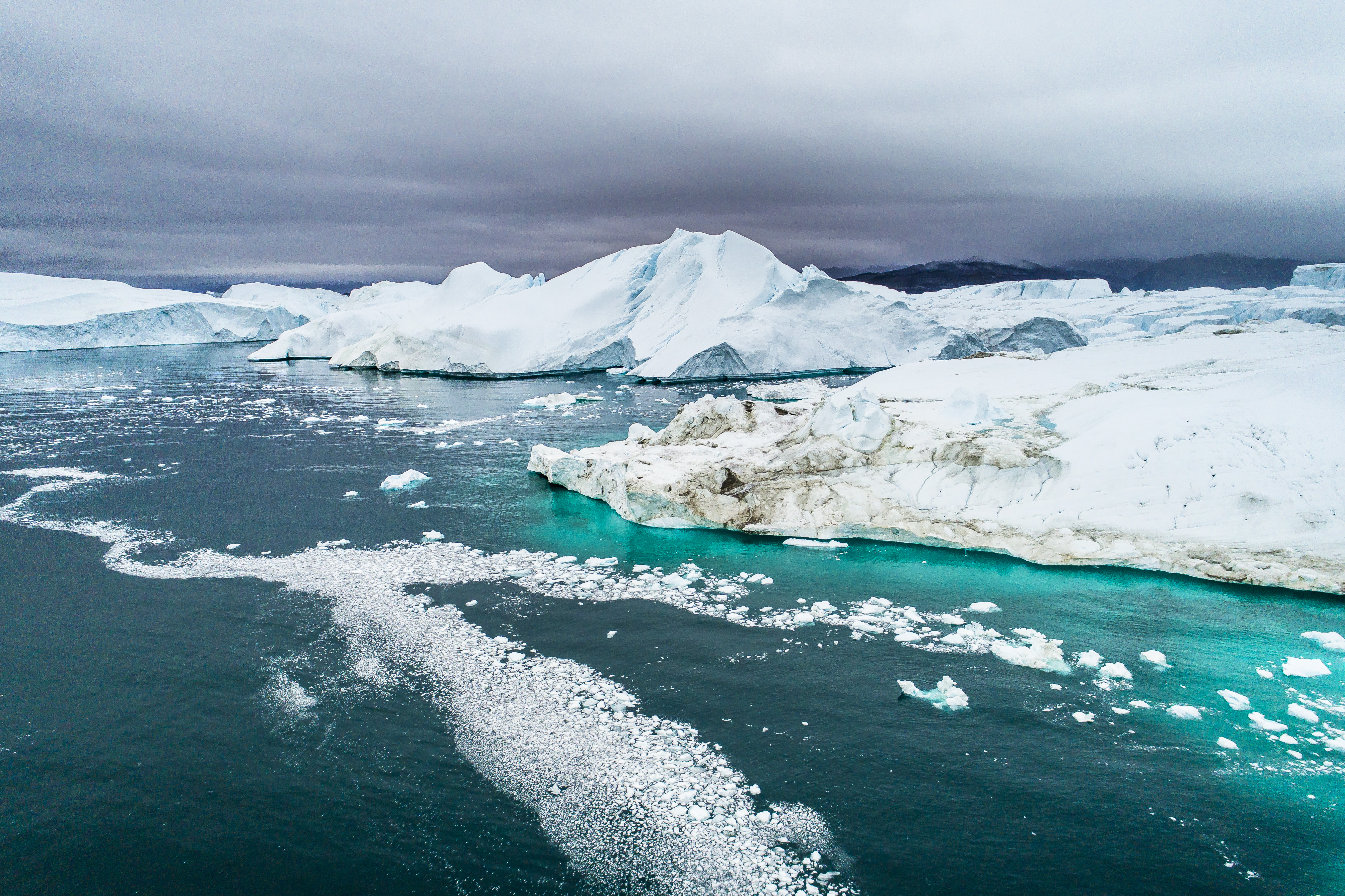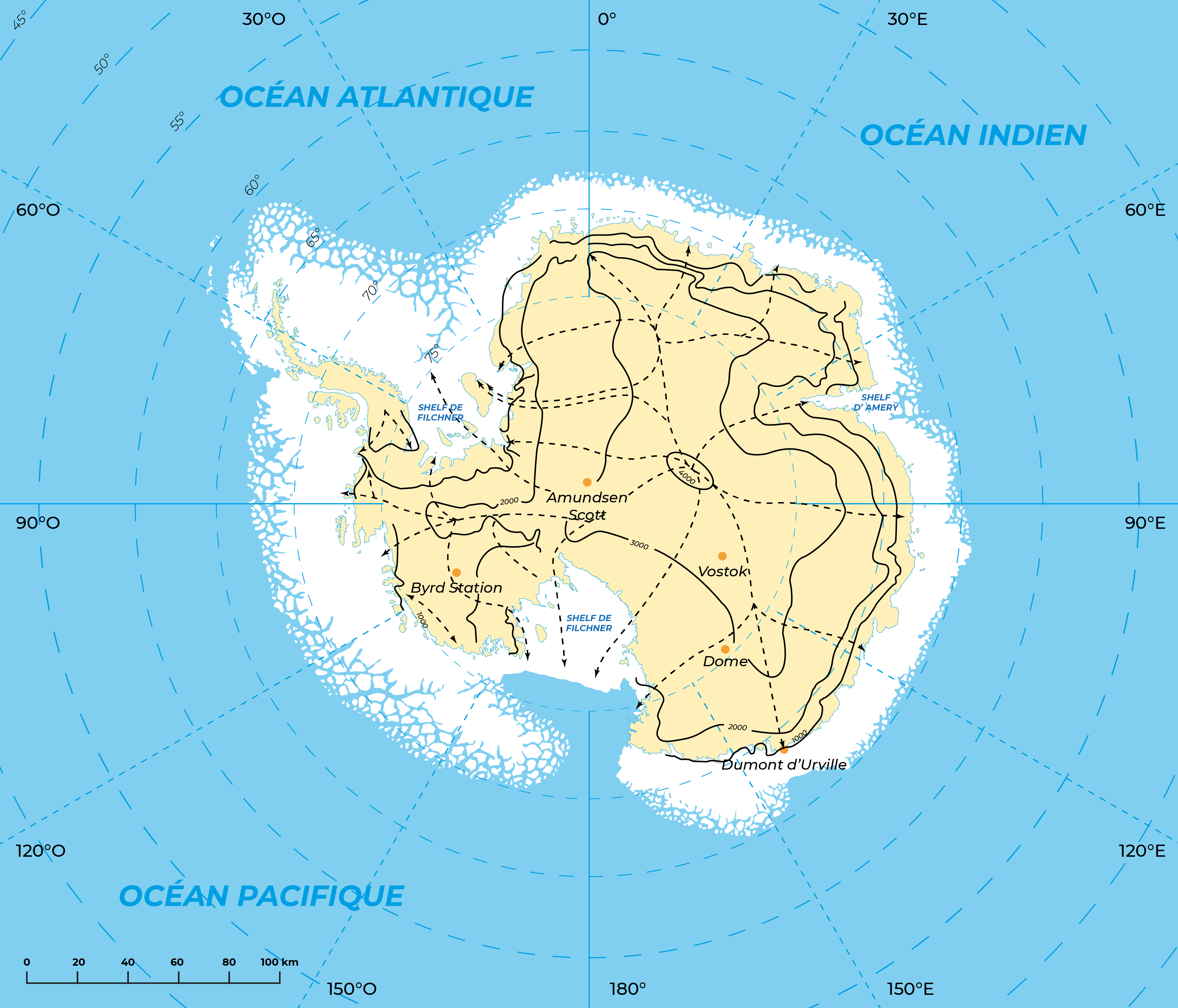Polar Encyclopædia
ICE CAP

The Polar POD will never be far away, but never close to this great ice colossus either. Perhaps the crew will see, with a glance through binoculars, blue cliffs streaked with brown, dominating the sea behind a screen of fog. This gigantic piece of mille-feuilles sliced cleanly with a knife is a cross-section of the edges of the immense Antarctic ice cap, regularly revived by the loss of fragments that collapse into the sea.

What you should know
The Antarctic ice cap has gigantic dimensions. Thirty million km² of water are retained here: 90% of all the land ice! In the East, the ice sheet reaches 4,800 m at its thickest point (69°54'S, 135°12'E) and its base sinks to 2,550 m below sea level in the most important basement depression, the Bentley Trough. On the other hand, at Argus Dome, the cap is only 1,000 m thick despite an altitude of 4,000 m, because there it completely covers a subglacial mountain: the Gamburtsev massif. This continental cap or islandsis, is unevenly distributed. The portion that covers East Antarctica (which can be called the East Cap) covers 10 million km² while the West Cap is 5 times smaller and 2 times thinner. The glaciers of the Peninsula and all the floating platforms of the ice sheet extensions total only 2 million km².

The ice pile has thickened over the past millennia, following the global variations of the Earth's climate. During a glacial maximum, for example, the sea level drops and the volume of the ice cap increases. Conversely, a warming climate reduces the overall surface area of the cap - both through melting and accelerated crumbling of the platforms - but at the same time, increased precipitation thickens it more rapidly. It can be said that each year, 2,000 km³ of snow are added to the Antarctic ice cap and that an equal amount must, roughly speaking, be evacuated to the sea by calving (breakup and formation of an iceberg) of the glaciers and ice shelves located on the coast. The fresh snow gradually settles as it sinks under the successive layers and the trapped air bubbles gradually disappear under the weight (at 3000 m, the pressure is 300 t/m2!). An ice, called nevé, forms between 50 and 100 m, then the glacier consolidates while "leafing" in depth.

The ice is not immobile: it flows towards the sea at a speed of a few millimeters per year in the heart of the land and up to 4 km per year at the periphery. This slow flow is carried out by deformation of the layers, like a wax: the ice particles "sink" while moving. Locally, the glaciers, real drains of the ice cap installed in the hollows of the relief, are much faster: melt water separates the ice from the rock, thus facilitating the sliding. The largest glacier (in the world) is the Lambert, in the Prince Charles Mountains: it is 400 km long and 40 km wide. The fastest is the Shirase, which advances more than 5 meters per day. On average, the snow that falls in the center of the continent takes 500,000 years to reach the sea. During these movements, if the ice passes over a bump in the base, the surface cracks into a set of crevasses about forty meters deep; covered with bridges of snow, these abysses set terrible traps for explorers. Today, the movements of the cap and its structure are studied by satellite. As in mountain glaciers, the transported rocks accumulate in the form of moraines. The search for meteorites fallen from space and concentrated in certain places by the ice has provided exceptional collections.
Antarctica is nowadays very much impacted by global warming. The Intergovernmental Panel on Climate Change (IPCC) indicates that the ice cap is losing about 150 billion tons of ice each year and this figure is increasing year after year. The western part is the most impacted by the arrival of warm currents that melt the large ice shelves. What about the future? For a global warming of about 2°C, West Antarctica will go into a partial collapse due to the instability of the sea ice cap.
Between 6 and 9°C, more than 70% of the ice volume is bound to disappear.
Suggested activities
The Antarctic ice cap
- How does snow turn into ice? What is the effect of fa pressure in this phenomenon?
- Why is there no ice cap at the North Pole?
For more details
Books :
- Antarctique, désert de glace (Lorius)
- Glaces de l’Antarctique - C. Lorius.
- La Voix des pôles - L. Lescarmontier.
- Salut au grand Sud – I. Autissier & E. Orsenna.
- Vostok, le dernier secret de l’Antarctique - JR Petit.
Miscellaneous :
- Blogs des hivernants de l’institut polaire : institut-polaire.fr
Support the project with a donation
The Polar POD expedition is one of the stamp of the pioners, a human adventure coupled with a technological challenge, an oceanographic exploration never before carried out which will mark a milestone in the discovery of the oceans.
Thank you for your support !
